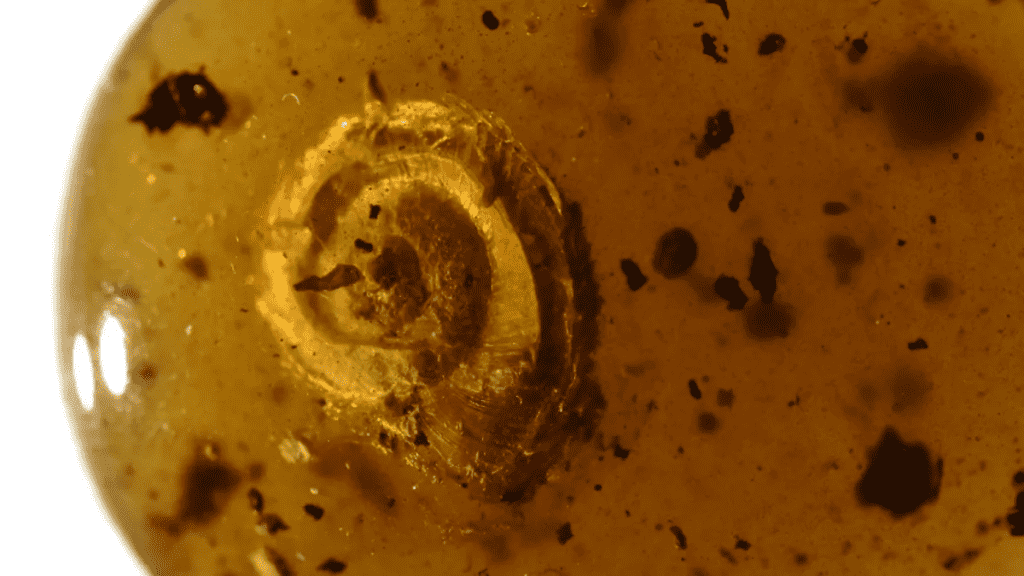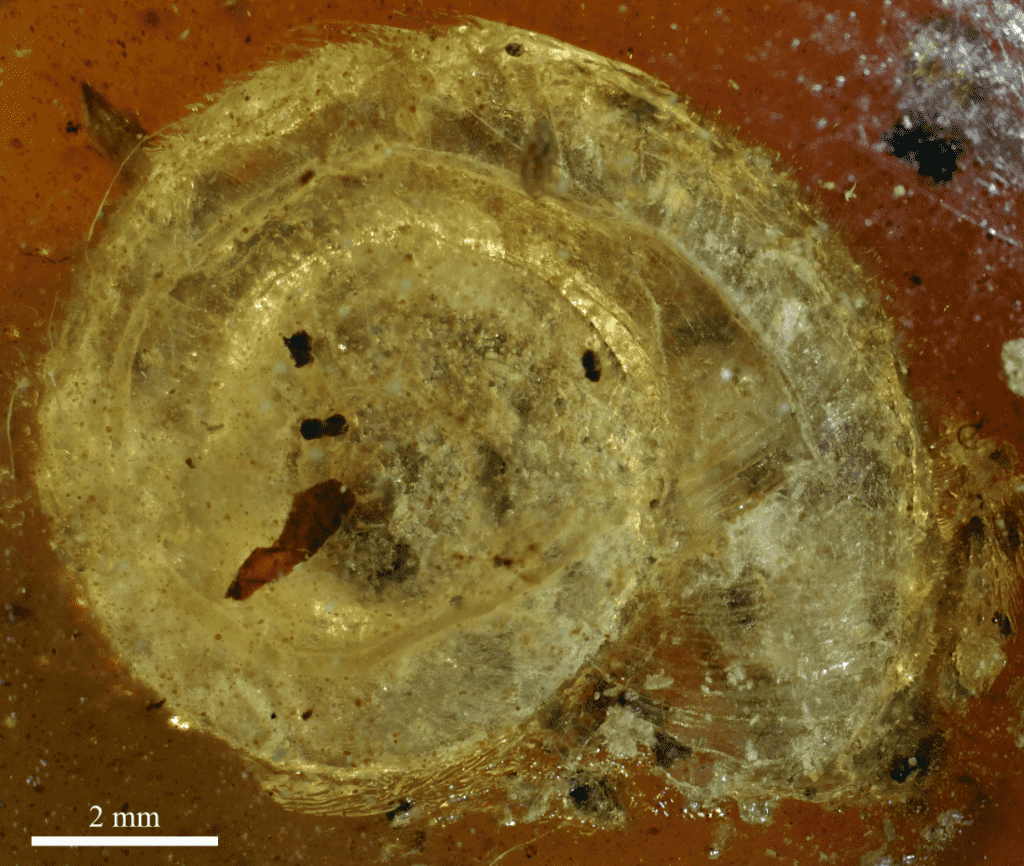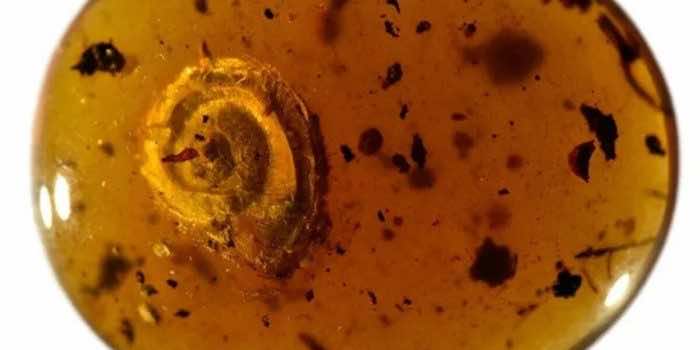A team of international researchers found this tiny snail, particularly a new species of land snail, housed in a 99 million-year-old piece of amber. The most intriguing thing about this newly discovered snail named “Archaeocyclotus brevivillosus” is that it is a ‘hairy’ snail and this feature has given it an “evolutionary advantage” over other species. However, a research study has been conducted on the snail in question and was led by Dr. Jean-Michel Bichain who hails from the Museum of Natural History and Ethnography in Colmar, France. The research was published in the academic journal “Cretaceous Research”.

Coupled with this, the researchers examined these thread-like hairs in detail by deploying the use of conventional microscopy and 3D X-ray micro-computed tomography. It was revealed that these tiny hairs are about 150 to 200 centimeters in length. However, it should be noted that the hairs are engrossed on the shell of this newly discovered specie. Regarding this, Dr. Adrienne Jochum from the Senckenberg Research Institute and Natural History Museum in Frankfurt and the Natural History Museum in Bern, said, “This is already the sixth species of hairy-shelled Cyclophoridae, a group of tropical land snails found so far, embedded in Mesozoic amber, about 99 million years old.”

“It is not uncommon for the shells of fossil and present-day land snails to be embellished with ridges, hairs, nodules, or folds; however, the development of such ‘decoration’ is still a complex process that usually does not occur without a purpose”, she added. In addition to this, Dr. Jochum further stated, “The new species, Archaeocyclotus brevivillosus, originates from a Cretaceous amber mine in the Hukawng Valley in Burma, where it was collected prior to 2017. The fossil snail is 26.5 millimeters long, 21 millimeters wide, and 9 millimeters tall. The shell’s outer margin is lined with short hairs that are bunched around the shell opening. Its name derives from the Latin words’ brevis (short or small) and vill?sus (hairy or shaggy).”

Dr. Jochum further talked about the advantages of hairs on this snail and hence, said, “For example, the hairs could improve the animals’ ability to cling better to plant stalks or leaves—something that has already been observed in present-day snails. They may also have played a role in thermal regulation for the snail by allowing tiny water droplets to adhere to the shell, thereby serving as an ‘air conditioner.’ Or they may have protected the snail shell from being corroded by the highly acidic soil and leaf litter of the ancient tropical forest floor”.
To that end, she further stated, “The bristles could also have served as camouflage or protected the snail against a direct attack by stalking birds or soil predators. And finally, it cannot be ruled out that the hairs provided an advantage in sexual selection.”


